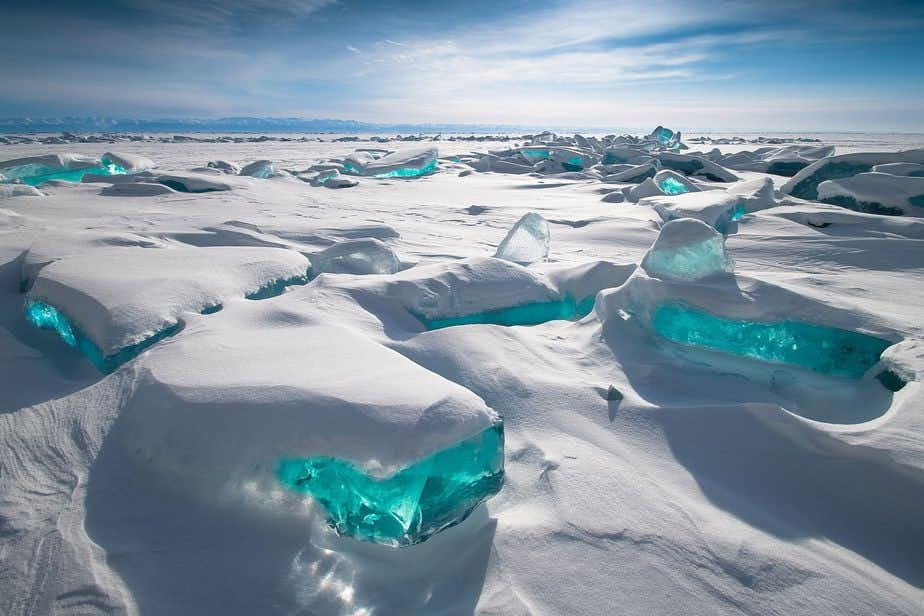Login
No account yet?
Create Account
Frozen Lake Baikal with Snow and Ice
In winter this Lake Displays a Phenomenon of Snow and Ice
10 travellers have this on their Bucket List
0 been here
Lake Baikal in Russia is beautiful all year round, but in winter it’s transformed into an icy spectacle. The lake freezes over and pressure combined with methane gasses cause the ice to crack and large shards of it protrude up. Huge cracks and intriguing methane circles can be seen in the ice.
The famous Lake Baikal in Siberia is the oldest and deepest lake in the world. It’s about 600 km long and in certain parts it’s 1,6km deep. When the Siberian winter hits, the lake freezes over and gets covered in ice between 1,5 to 2 metres thick. It’s enough to bear the weight of a car or a bus.
What makes this frozen lake so dramatically beautiful is that the very clear water makes the ice a magnificent turquoise colour. But is has more to offer, methane gasses rising from the lake’s floor create unique circular patterns in the ice, sometimes pushing up shards of it at odd angles. Photographers flock to the lake to capture these amazing sights.
Best Tips for Lake Baikal
Lake Baikal is extremely chilli in winter. Temperatures can go as low as -30 degrees celsius. These low temperatures are experienced during the day as well. So dress appropriately for these extreme weather conditions. Special care should be taken of your camera gear such as batteries. This experience is well worth all the effort.
Locals drive their cars (and motorbikes) across the ice, and kids try to skate on the lake, but that’s tricky due to the many cracks and lumps on the ice.
How to Get to Lake Baikal?
The nearest city is Irkutsk. From the bus station, you can take the bus to the town of Listvyanka (1.5 hours). From there you can go on the ice yourself, but you can also join an organised group.
The Trans Mongolian Express runs along the lake. You can get off the train and then book an excursion to discover the lake. This can be an adventure, and is highly recommended.
10 travellers have this on their Bucket List
0 been here


